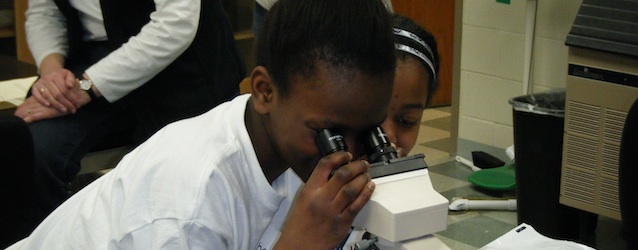
Episode 92 – STEM in Primary Classrooms
 As the Common Core State Standards in Math and English Language Arts are being adopted and implemented in classrooms nationwide, educators have been wondering if there will be any room left for science – especially for younger students. When we caught wind of a growing movement to increase STEM content in Minnesota elementary schools, we knew we had to investigate. Listen this week as we talk with Doug Paulson – STEM Integration Specialist for the Minnesota Department of Education. Doug gives us insight into Minnesota’s statewide initiative to increase STEM content in primary classrooms.
As the Common Core State Standards in Math and English Language Arts are being adopted and implemented in classrooms nationwide, educators have been wondering if there will be any room left for science – especially for younger students. When we caught wind of a growing movement to increase STEM content in Minnesota elementary schools, we knew we had to investigate. Listen this week as we talk with Doug Paulson – STEM Integration Specialist for the Minnesota Department of Education. Doug gives us insight into Minnesota’s statewide initiative to increase STEM content in primary classrooms.
Links
- Star Tribune article on early childhood science and STEM
- Minnesota’s Standards Based Resource to Support K-12 STEM Teachers
- Annual Elementary Engineering Conference in Minnesota
- Minnesota Early Education Indicators to support pre-K programs
To listen to this episode, download the mp3 directly, find us on iTunes, or use the player below.

We are totally behind this initiative! At Bethel University, we require our elementary education majors to take a full year of science concepts, as well a full year of mathematics concepts, in addition to the methods courses in science and mathematics. We have also added a STEM emphasis for elementary majors with two upper level integrated, applied STEM courses that are project based and team taught by a professor from the sciences as well as a professor from the education department.
Do you really believe that you are bringing enlightenment to the poor ignorant elementary teachers?!!!!! Perhaps your “experts” should read the ways this was effectively done at early levels in the 1930’s by people like Dr. Ernest Horn and Herbert Spitzer and others at the University of Iowa and by many one room school teachers in states like Wisconsin. Their pupils could build bridges, barns, and invent needed tools for farming, get patents, and many other STEM activities with only an elementary education. It might be good to research how this was done.
Thanks for reminding me that many of our new ideas are not new, but have just been forgotten or been overwhelmed by voluminous standards and plentiful assessments. In all fairness, the 1930s were a very different time. I suspect that educators were pulling their curricula from the life needs and experiences of their students rather than national standards and state requirements. Perhaps H & L Kuse would like to offer some links to appropriate works by Horn, Spitzer, or others to get us started in the process of contextualizing their work to our times.
Great comment, R. Breen! I’ll be spending Easter with our 98 year old uncle in Seattle where we will visit NOAA. Our uncle laid the hot line between Moscow and D.C, mapped the Philippine islands after the war, and surveyed the entire coast of Alaska and the Hoover Dam area as a captain in NOAA. We’re visiting with a current NOAA engineer and I can’t wait to hear them compare notes! While the technologies have changed, I’m sure they’ll “think alike”. What we want to do is ignite that same passion in our students in a world where time for thinking, planning and designing is not always provided.